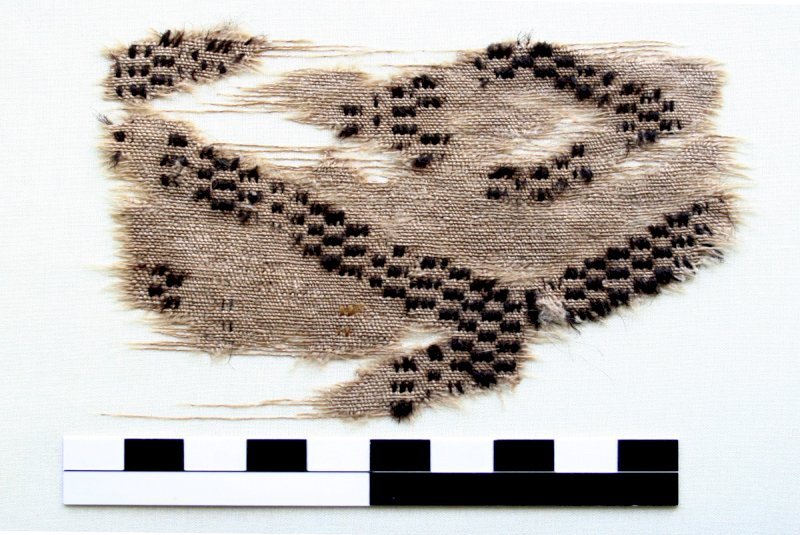Personal belongings of mysterious saltmen named national heritage

TEHRAN – A total of nine objects belonging to the ancient saltmen being kept in the Zolfaqari Archaeological Museum have recently been inscribed on the national heritage list.
The Ministry of Cultural Heritage, Tourism, and Handicrafts announced the inscriptions on Sunday in a letter to the governor-general of the northwestern province, CHTN reported.
Pieces of woolen fabric, a broom, and an earthenware bowl were among the properties added to the prestigious list.
In 1993, miners in the Douzlakh Salt Mine, near Hamzehli and Chehrabad villages in Zanjan province, accidentally came across a mysterious mummified head, dated to 300 CE. The head was very well preserved, to the extent that his pierced ear was still holding the gold earring. The hair, beard, and mustaches were reddish, and his impressive leather boot still contained parts of his leg and foot, according to the Ancient History Encyclopedia.
However, in 2004, the miners discovered yet another “saltman,” which was followed by further excavation and unearthing of remains of a human body along with a large number of artifacts made of wood, metal tools, clothing, and pottery.
In 2005, a systematic excavation began, three more mummies were excavated, and a sixth remained in situ due to a lack of funds for its storage. The context of the remains suggested that a collapse in the mine had caused the death of the miners in question.
The first mummy dubbed the “saltman,” is on display in the National Museum of Iran in Tehran. He still looks very impressive.
This particular “saltman” was originally dated based on the archaeological material found with him. Later, the mummy was carbon dated, which placed him in 500 CE (1750 BP, that is, “before present” or 1750 years ago), the Sasanian Empire's height. The second “Saltman” was carbon-dated to 1554 BP, which placed him in the same era as the first “saltman,” the Sasanian era.
The third, fourth, and fifth “saltmen” were also carbon dated. The third body was dated and placed in 2337 BP, the fourth body in 2301 BP, and the fifth mummy was dated to 2286 BP, placing them all in the Achaemenid period.
Saltman No. 5 had tapeworm eggs from the Taenia sp. genus in his system. These were identified during the study of his remains. The find indicates the consumption of raw or undercooked meat, and this is the first case of this parasite in ancient Iran and the earliest evidence of ancient intestinal parasites in the area.
ABU/ AFM
Leave a Comment